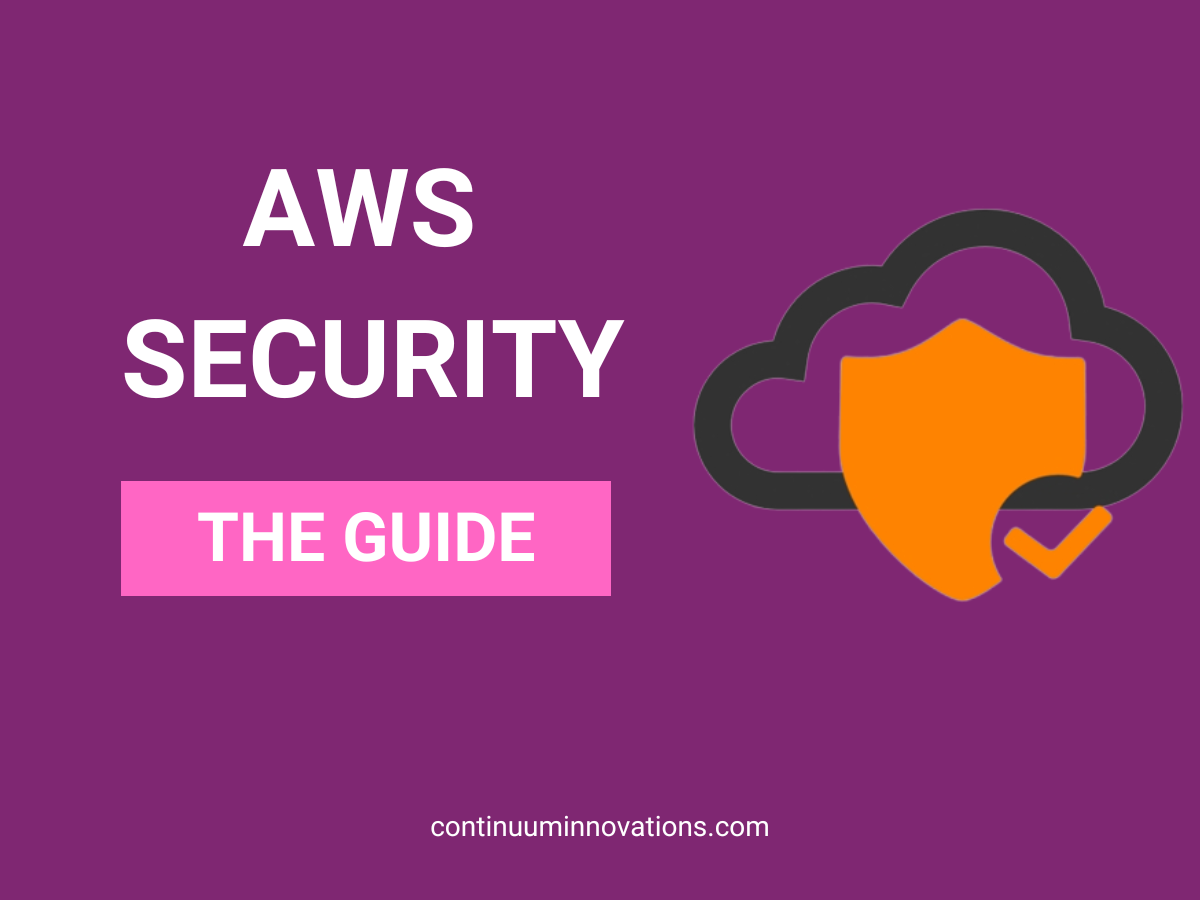AWS Security Best Practices: What You Need to Know About Securing Your AWS Cloud
Organizations must be agile to thrive in today’s competitive digital landscape. They must be ready to respond fast in the face of continually shifting consumer preferences and evolving technology. How would AWS security best practices help here?
Companies worldwide are achieving this by turning to AWS. It enables them to rapidly scale and deploy technologies to meet the shrinking or growing demand, with no obligation to invest in costly IT infrastructure. Many AWS consulting agents recommend AWS as a cost-effective and efficient solution that has made it convenient for organizations to reap the benefits of innovation.
While most businesses are now well-aware of AWS’s value, many still have fairly low awareness regarding cloud security. Experts at Continuum Innovations discuss some major challenges organizations face when building with AWS cloud services, followed by ways and some AWS security best practices to protect critical data from cyberattacks.
What are Some Challenges of AWS?
It has been estimated that nearly 98% of all cloud security lapses occur due to customers’ faults. Many of these occurrences can be avoided with a better understanding of the Amazon Web Service’s Shared Responsibilities Model. It clearly highlights that AWS secures the cloud infrastructure but ensuring optimal security in the AWS cloud is the clients’ responsibility.
AWS isn’t responsible for all security aspects, like protecting network traffic, access management, and safeguarding client data. Most of these responsibilities lie on customers, so knowing what role they play in cybersecurity is key for running a secure AWS environment.
Maintaining visibility is another common challenge most organizations face. Visibility is a crucial aspect of a robust cloud strategy. Additionally, procedures used for on-site security don’t always work as effectively with cloud infrastructure.
Security policies must be updated to increase visibility while ensuring your cloud solutions remain protected against the ever-expanding threat landscape.
Top 3 AWS Security Best Practices

Always Use Encryption
While certain types of sensitive data must be encrypted for regulatory compliance, encryption also provides a fail-proof safety barrier for strengthening the security positioning. All data should ideally be encrypted, including the data that’s stored as well as data that’s in transit.
Encrypting data is easy within the AWS cloud environment. There’s a native encryption feature that protects the stored data. Experts also recommend using client-side encryption to protect data before it goes to the cloud. Using both server-side and client-side encryption offers extra protection.
AWS also offers a dedicated Key Management Service to give users centralized control over the encryption keys. Using client-side encryption along with server-side encryption will make it easier to manage the keys. Don’t use or create
Keep the Cloud Up-to-Date
Keeping the AWS cloud servers patched at all times is crucial, even the servers that are not accessible publicly. Relying on outdated cloud infrastructure can leave you vulnerable to many cybersecurity threats that could cost your business millions. You can automate patches for the cloud systems using the AWS Systems Patch Manager or use third-party tools to complete the task.
Implement Robust Cloud Security Protocols
Having appropriate protocols in place can help ensure company and client data remains safe from cyberattacks. You must not grant anyone privileges beyond what might be needed. Clearly define the roles of users and only grant the essential privileges required to complete the task at hand.
Once the user no longer needs privileges, revoke them. This can be accomplished by conducting regular privilege audits and comparing the privileges of all users with their current tasks.
Next, make sure the password policy requires not only the use of strong passwords but also protocols for password expiration. This way, the passwords will automatically have to be changed every few weeks. Session time-outs and multi-factor authentications help add an additional security layer, making it tougher for cyber criminals to access any accounts within the AWS clouds. To properly minimize risks, ensure all protocols are followed consistently throughout the organization.

Looking for more tips on AWS security best practices or simply looking for something else related to the cloud infrastructure? Head over to our blog section or schedule a consultation with our experts to leverage the power of the cloud. Our cloud services consultants can help you migrate to the cloud to improve efficiency safely with a comprehensive strategy that always yields positive results.
Let Continuum Innovations be your AWS consulting partner! We’re a managed cloud services provider with a team of exceptional experts that can walk you through different solutions to allow you to accelerate your digital transformation without any disruptions. Our services include cloud migration, data lake building, data analytics services, AWS managed services, managed DevOps services, AWS Connect, AWS security and compliance, AWS Media services consultant, and AWS cloud consultancy services. Get in touch with us to learn how we use leading-edge technology to help businesses in Princeton, NJ, thrive and stand out from the crowd.


